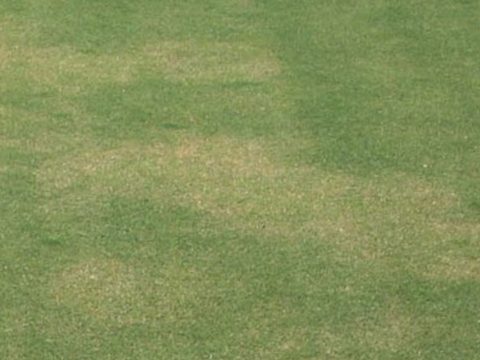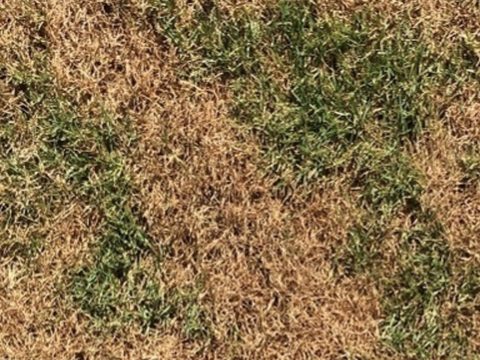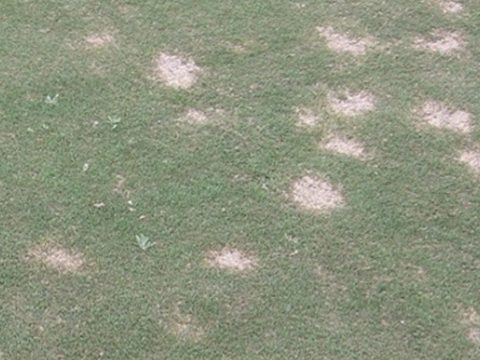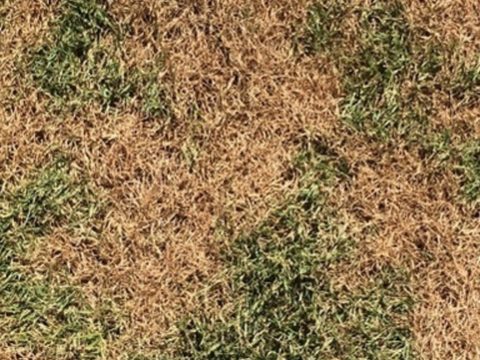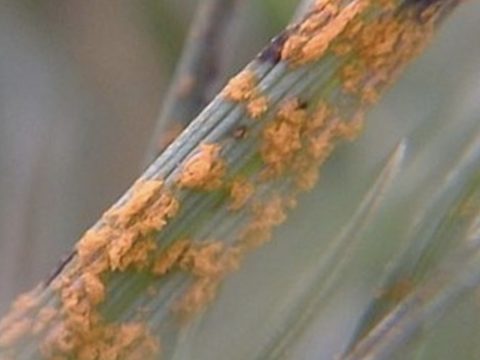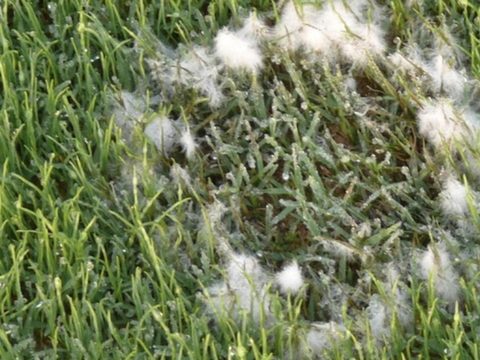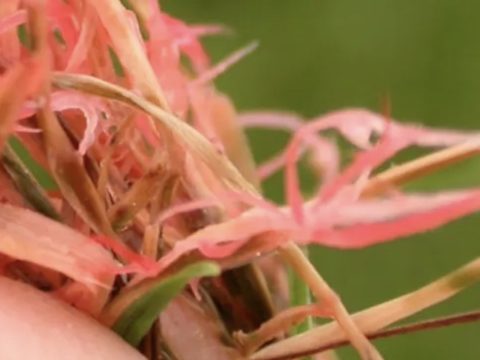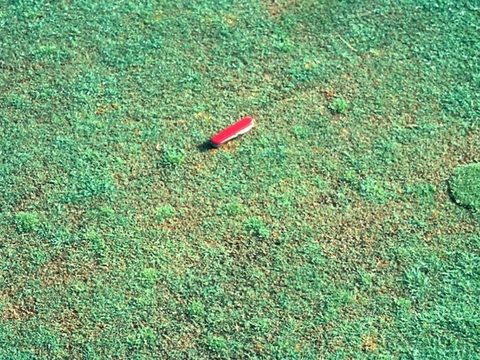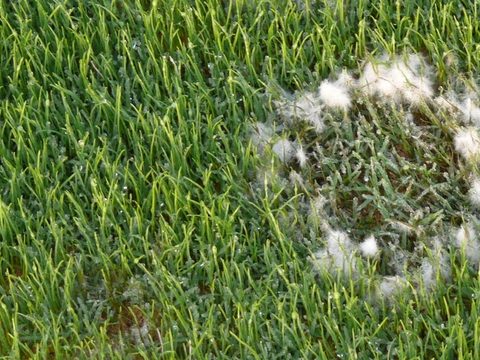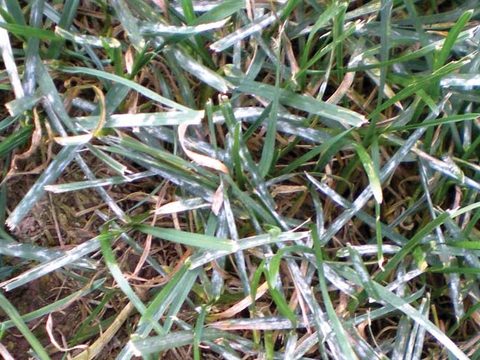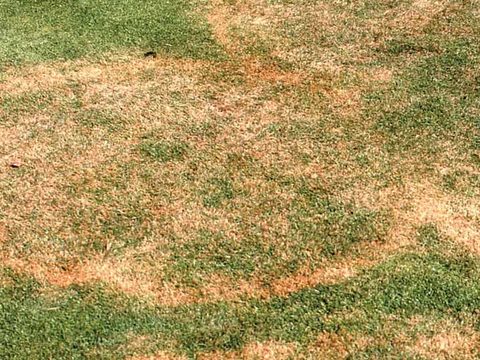South Africa Turf Disease Guide - Anthracnose
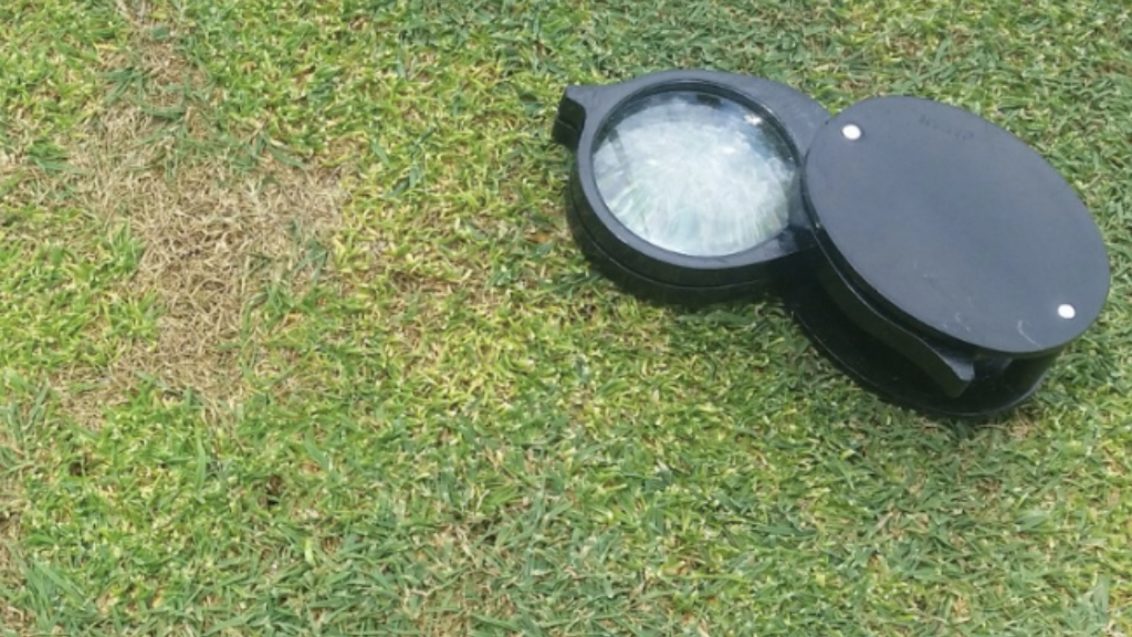
Causal Agent:
Colletotrichum cereale (formerly Colletotrichum graminicola)
Susceptible Turfgrass:
Creeping Bentgrass, Paspalum, Poa Annua
Symptoms:
Anthracnose is most destructive during warm weather. It causes irregularly shaped patches that
are yellow to brown in colour. Leaf lesions that are yellow with black centers may also occur. Anthracnose also causes a basal stem rot from late Winter to Autumn. Infected shoots are easily detached. The dead foliage and stems also become covered with acervuli – tiny, spined, black fruiting bodies – that require magnification to identify.
Conditions Favouring Disease
Greens established with Poa Annua or susceptible varieties of creeping bentgrass can be attacked by Anthracnose throughout the entire growing season. In creeping bentgrass putting greens, the basal rot form of the disease is most active during hot weather in the summer, whereas the foliar blight is most common during cool and cloudy conditions.
The opposite is true on Poa Annua, with the basal rot being most severe in cool, cloudy weather and the foliar blight more common during hot, dry weather.
The fungus may also survive as darkly pigmented aggregates of hyphal cells (stromata) that are formed on stolons and at the base of tillers. Exposure of the stromata to sunlight and moderate temperatures of 15 to 25oC (59 to 77oF) can induce formation of conidia. The conidia may serve as initial inoculum for basal rot Anthracnose in the spring or early summer.

Best Management Practices (BMP) for Anthracnose control:
Rutgers University research has shown that using Banner Maxx + Daconil and Heritage Maxx + Daconil, one can prevent and control Anthracnose. However, BMP (Best Management Practices) are equally important:
Maintain optional moisture levels (using a moisture meter is a great way to achieve this).
- Reduce leaf wetness periods.
- Regular dusting (this significantly reduces Anthracnose severity as you are protecting the crown of the plant).
- Rolling (up to 3 times per week).
- Rather reduce mowing height than cut back on N.
- Apply a granular application of N in spring and then maintain the nitrogen levels with 18 - 22,5 kg of N/ ha per week in early spring and reduce to 4kg /ha per week in late spring and summer.
- Maintain good nitrogen (3,6 % in the leaf) and potassium levels.
- Potassium Nitrate is a good source of N (avoid Potassium Chloride, Ammonium sulphate and Ammonium Nitrate).
- Maintain a soil pH of 6.
- Primo Maxx (apply 0.3 - 0.6 l/ha) – every 7-14 days during the growing season. Primo Maxx not only allows you to maintain your greens speed, but has also reduced the disease severity unlike the competitor products.
Keys products for Anthracnose prevention and control:
- Optimum water volume is 750 l/ha when targeting Anthracnose – good nozzles are also part of the secret to success.
- Daconil Weatherstik – research has shown you require lower rates every 14 days – generic products require more regular applications at higher rates. Best results with a tank mix of Banner Maxx/Daconil and Heritage Maxx/Daconil. The mixes work better as there are more than 12 strains of Anthracnose per green and different strains have different resistance levels to different chemistry.
Just tap the links below to read about other turf diseases. Or download the full free guide at the bottom.
- Anthracnose
- Brown Patch
- Brown Ring Patch (Waitea Patch)
- Dollar Spot
- Fairy Ring
- Superficial Fairy Ring
- Grey Leaf Spot
- Large Patch
- Microdochium Patch
- Powdery Mildew
- Pythium Blight
- Pythium Root Rot (Root Dysfunction)
- Red Thread
- Rhizoctonia Zeae (Rhizoctonia leaf and sheath spot)
- Rusts: Crown, Leaf and Stem
- Spring Dead Spot
- Summer Patch
- Take-all Patch and
- Take-all Root Rot
If you would like to have a complete copy with all the turf diseases, you can download it on the link below.



